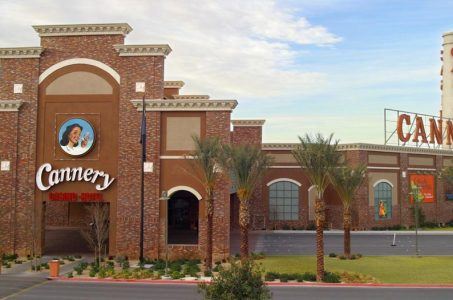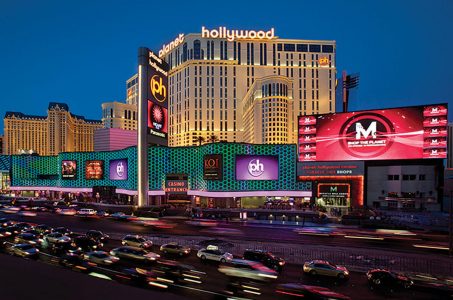Las Vegas Was Magic In Earlier Days but Spectacular Now: ‘Casino’ Screenwriter
Posted on: November 26, 2020, 11:44h.
Last updated on: June 30, 2021, 09:50h.
Las Vegas was “magic” in the era when casinos were smaller and more intimate, author and screenwriter Nicholas Pileggi told Casino.org. But the city and its casinos now are “spectacular,” he said.

Pileggi said when hotel-casinos on the Las Vegas Strip each only had several hundred rooms, the staff and customers often knew one another. Entertainers such as Dean Martin could be seen dealing blackjack at the Sands after performing in the Copa Room. Frank Sinatra, another member of that era’s famous Rat Pack, might wander out to the casino floor and mingle with customers.
The period from the late 1950s through the 1970s had an intimate appeal, Pileggi said.
It was a different time,” he told Casino.org this week. “It was sort of fabulous.”
New York-based Pileggi, an 87-year-old former Associated Press reporter, co-wrote the Las Vegas Mafia movie Casino with director Martin Scorsese. The film was released 25 years ago this month. An exhibit of memorabilia from the movie recently went on display at the Mob Museum in downtown Las Vegas.
The movie is a fictional account of Mafia associate Frank “Lefty” Rosenthal’s rocky marriage to Geri Rosenthal, a former dancer at the Tropicana Casino on the Las Vegas Strip. Robert De Niro and Sharon Stone portray characters based on the Rosenthals. Joe Pesci plays a character modeled after mobster Anthony “Tony the Ant” Spilotro.
The movie is based on Pileggi’s 1995 nonfiction book, Casino: Love and Honor in Las Vegas. The characters’ real names were used in the book, but were changed in the movie for legal reasons. For the book, Pileggi interviewed Frank “Lefty” Rosenthal, former Chicago and Las Vegas gangster Frank Cullotta, and many more from that period.
Pileggi also co-wrote the 1990 New York Mafia movie Goodfellas with Scorsese. This movie is based on Pileggi’s true-crime book, Wiseguy.
An Earlier Era
When Pileggi was writing the book Casino, he stayed in Las Vegas at the Sands, where employees remembered him, he said.
Walking into a casino was “like seeing a friend,” Pileggi said.
In those days, Las Vegas casinos were “basically for gamblers, for people who wanted to go and gamble,” he said.
“They weren’t necessarily places you took your kids,” Pileggi said.
That began to change in the 1980s, when corporations moved in and started building 3,000-room megaresorts, where gambling “is an additional amenity,” Pileggi said.
He said the newer Las Vegas is a “totally different economy of scale.”
“You can make a lot more money with that kind of crowd than you can with three hundred guys who were betting yellow chips at the craps table,” he said.
New Las Vegas
Many people who remember the earlier days are no longer around, Pileggi noted. The Sands was demolished in 1996 to make way for the Venetian. Other properties from that period, including the Stardust, Dunes, and Hacienda, also have been demolished and replaced by newer resorts.
“The old Vegas was magic,” Pileggi said. “But there are people who never saw the old Vegas and can’t even conceive of it, so the new Vegas is magic to them.”
Pileggi said the newer version lacks the same “intimate quality,” but has its own appeal.
“It’s Disneyland,” the veteran screenwriter said. “The climate is good. These hotel-casinos are spectacular. It’s just unbelievable.”
While newer visitors have “their own Las Vegas,” he sometimes is nostalgic for an earlier era.
“When I go to Vegas now, I kind of squint my eyes and try to think of the old days,” Pileggi said.
Related News Articles
Boyd Gaming Completes Cannery Acquisition
Caesars Eyeing Las Vegas Strip Asset Sale in Early 2022, Says CEO Tom Reeg
Most Popular
Mirage Las Vegas Demolition to Start Next Week, Atrium a Goner
Where All the Mirage Relics Will Go
Most Commented
-
Bally’s Facing Five Months of Daily Demolition for Chicago Casino
— June 18, 2024 — 12 Comments
















Last Comments ( 2 )
If you want an earlier glimpse into old Las Vegas head over to the El Cortez on Fremont in downtown. You will not be disappointed.
I loved the "old" Las Vegas...I was there to gamble eat great food at low prices and swim in wonderful pools You were treated as a customer not a credit card number